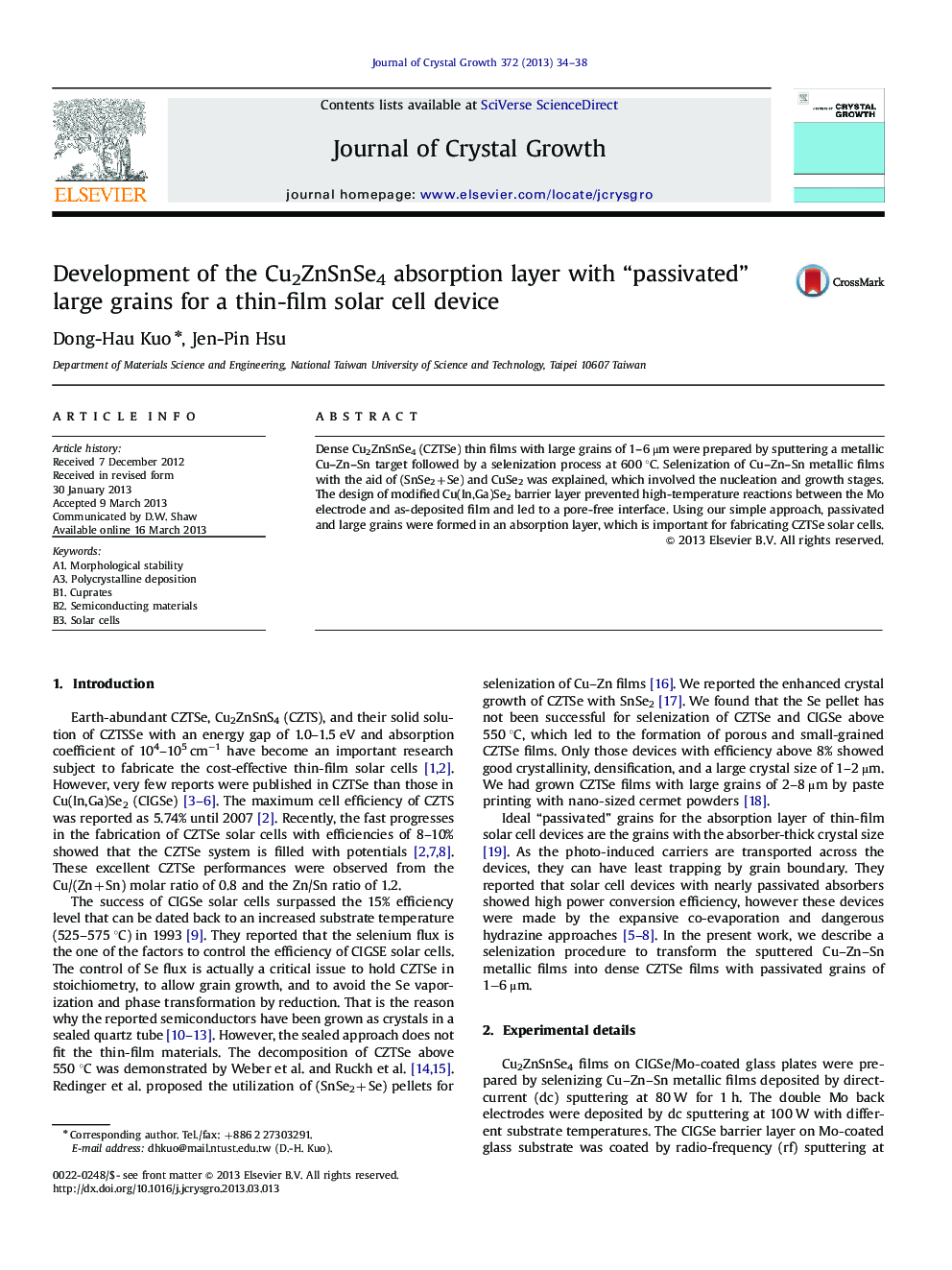| Article ID | Journal | Published Year | Pages | File Type |
|---|---|---|---|---|
| 1790994 | Journal of Crystal Growth | 2013 | 5 Pages |
•Sputtered Cu–Zn–Sn films were selenized at 600 °C with a two-selenide approach.•The progress in obtaining the two-selenide selenization method was presented.•Dense Cu2ZnSnSe4 with “passivated” large grains of 1–6 μm was achieved at 600 °C.•Conventionally, selenization at 600 °C with Se led to porous or small-grained CZTSe films.•CZTSe solar cell devices with world record in efficiency have grains of 1–2 um.
Dense Cu2ZnSnSe4 (CZTSe) thin films with large grains of 1–6 μm were prepared by sputtering a metallic Cu–Zn–Sn target followed by a selenization process at 600 °C. Selenization of Cu–Zn–Sn metallic films with the aid of (SnSe2+Se) and CuSe2 was explained, which involved the nucleation and growth stages. The design of modified Cu(In,Ga)Se2 barrier layer prevented high-temperature reactions between the Mo electrode and as-deposited film and led to a pore-free interface. Using our simple approach, passivated and large grains were formed in an absorption layer, which is important for fabricating CZTSe solar cells.
